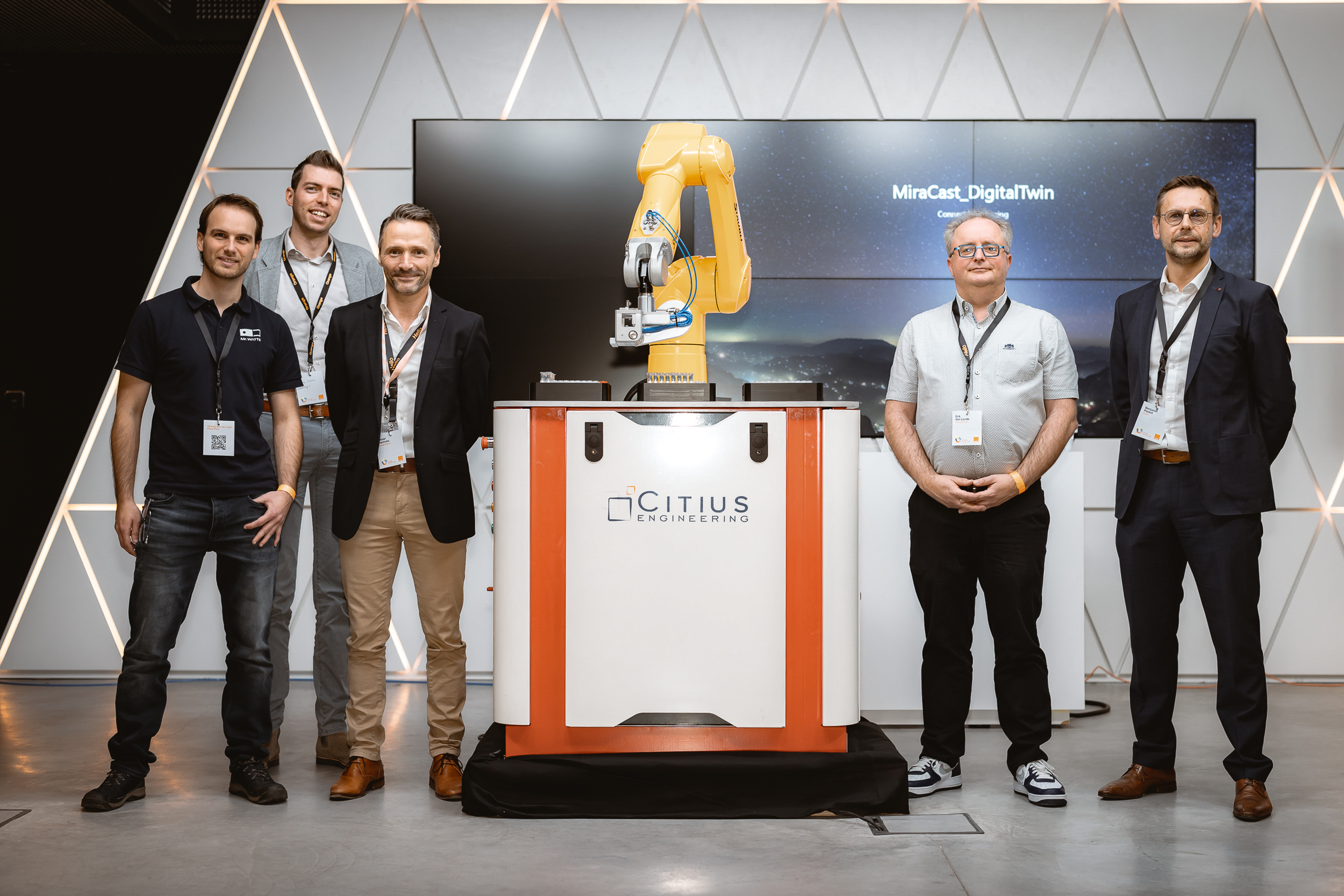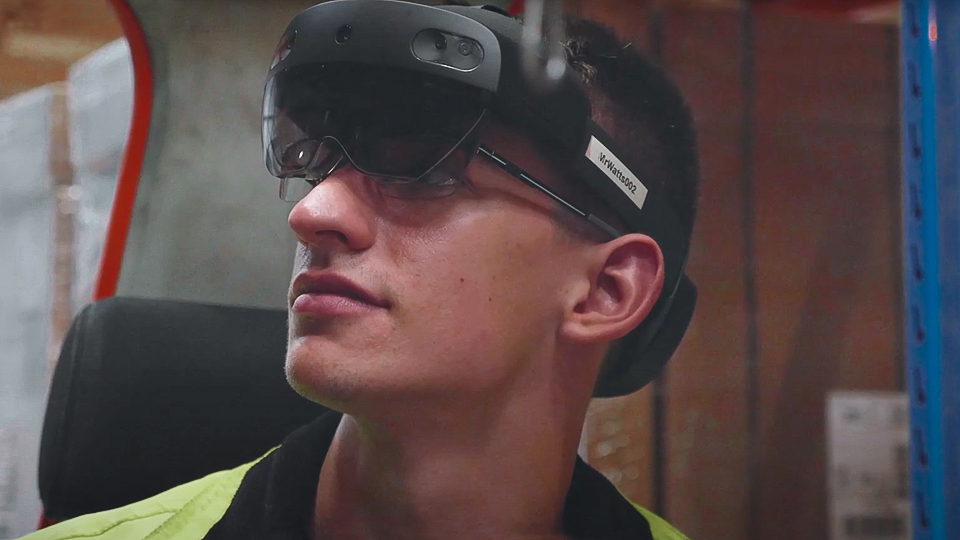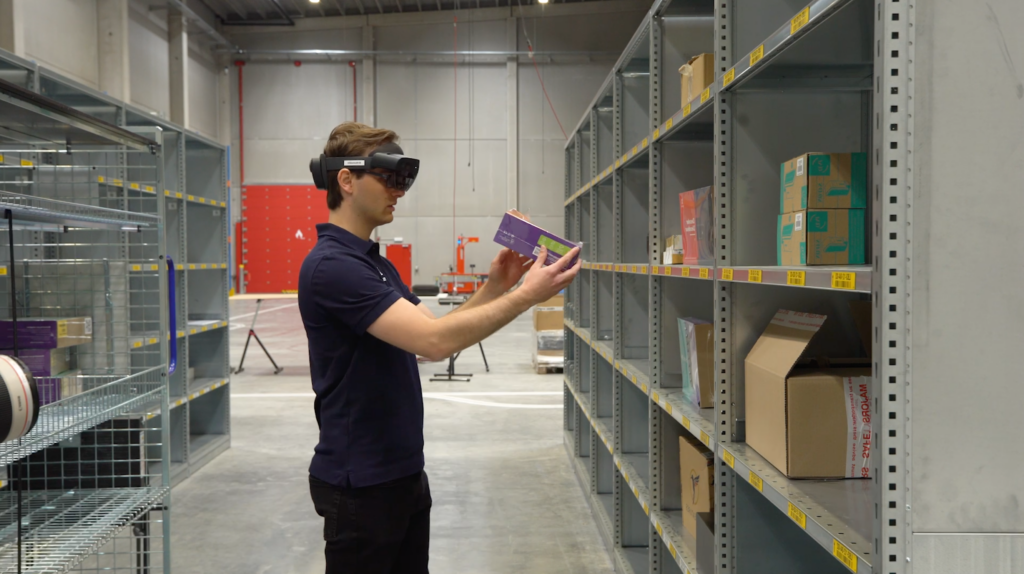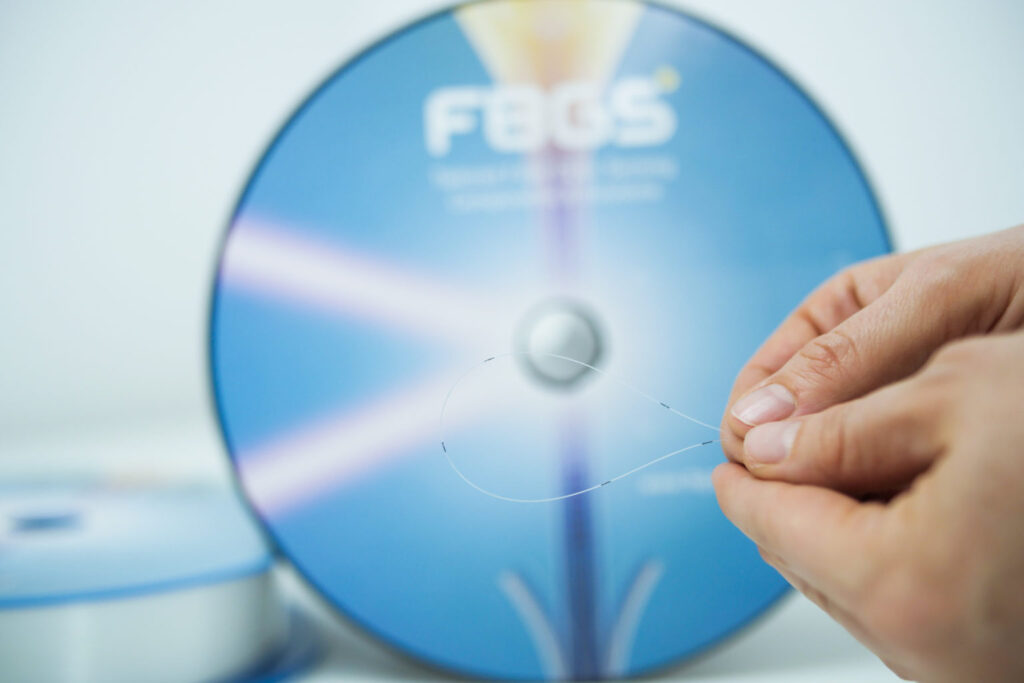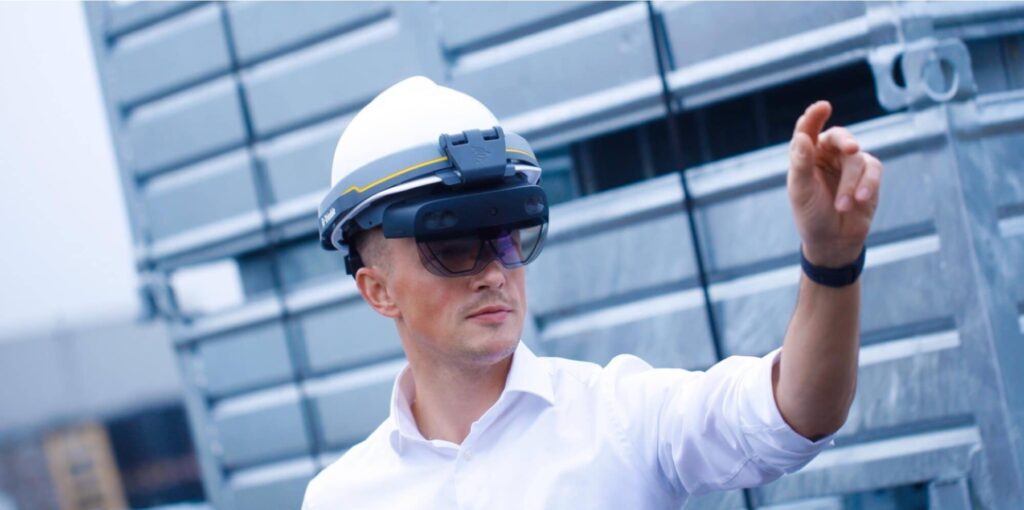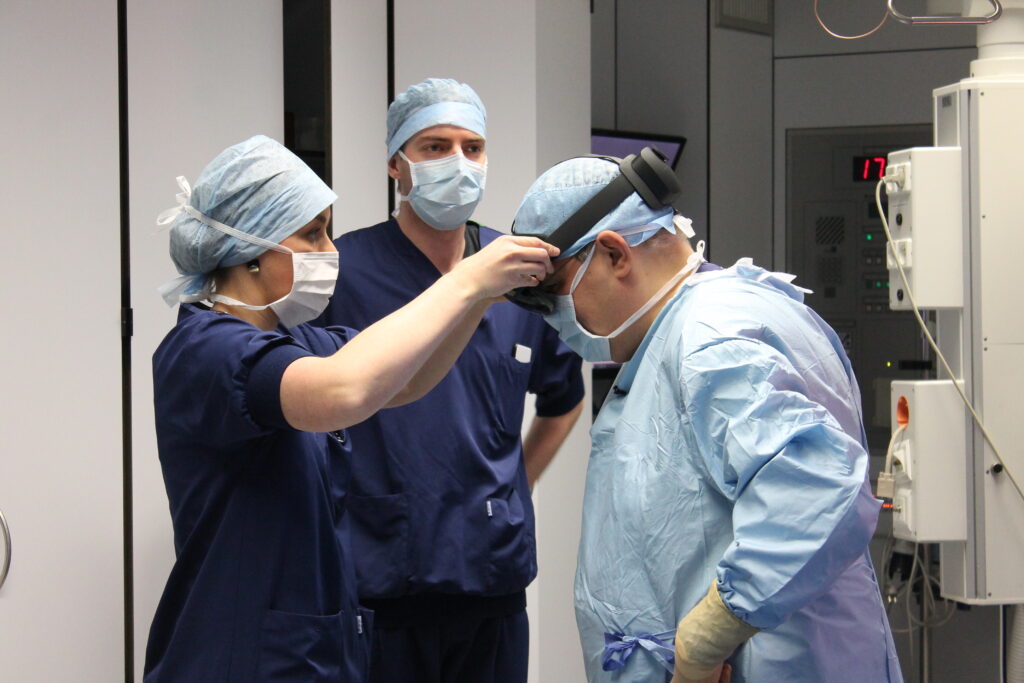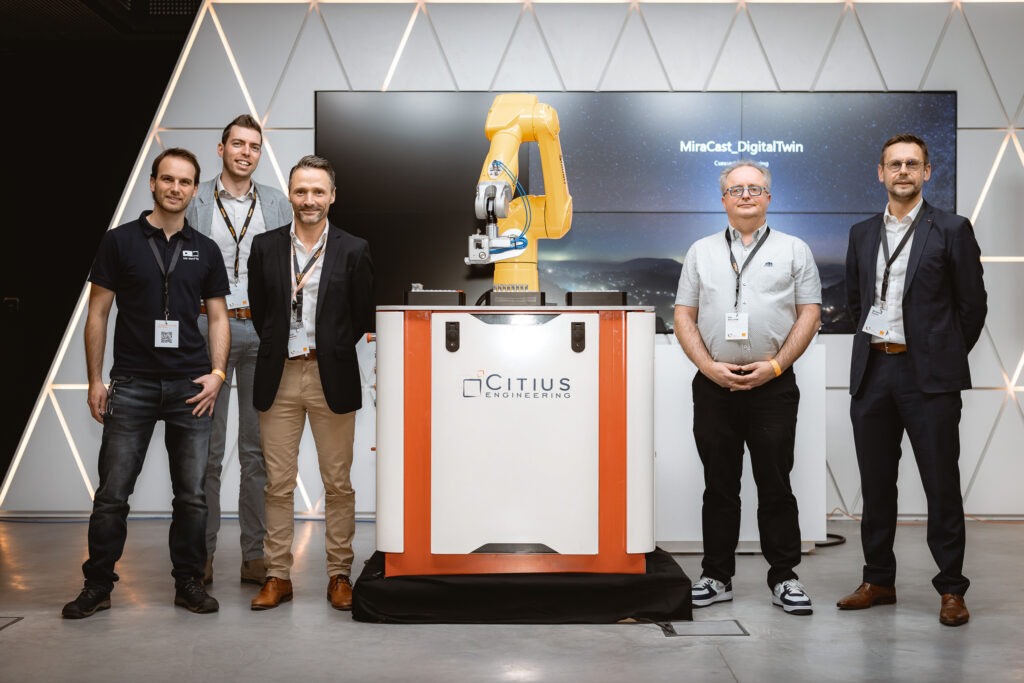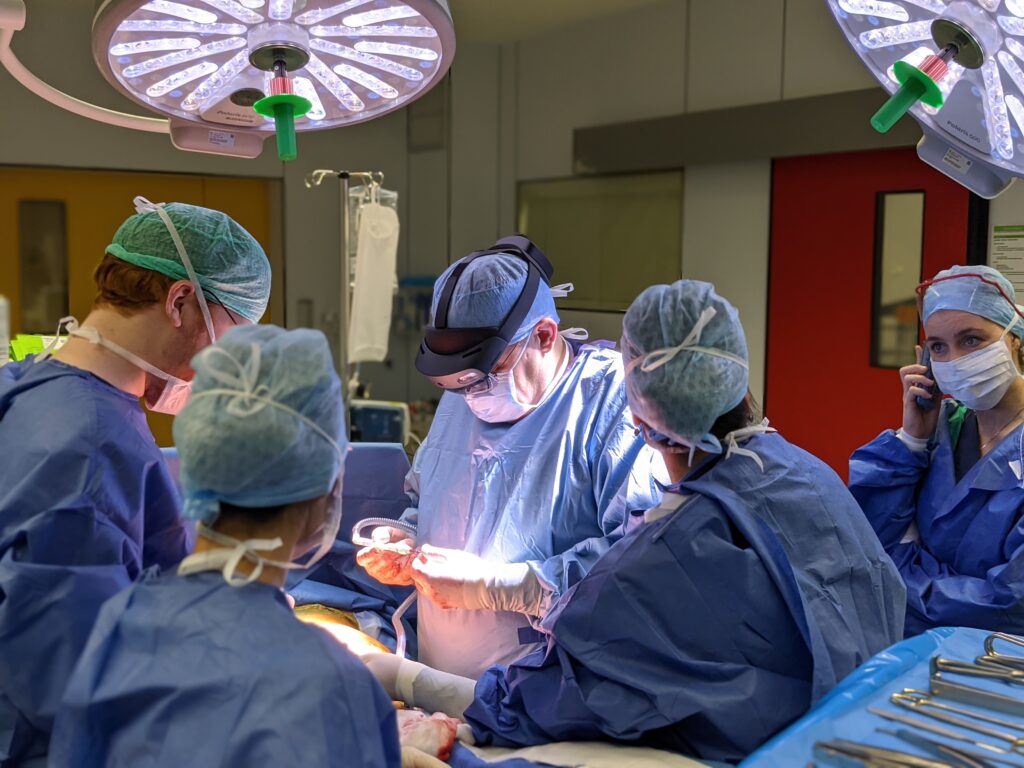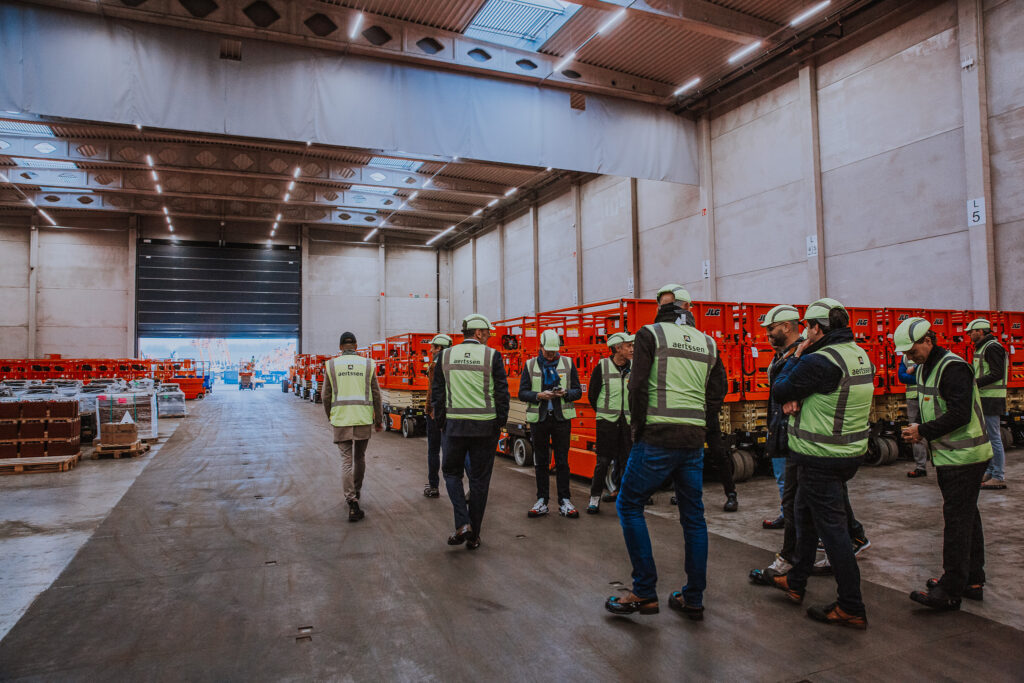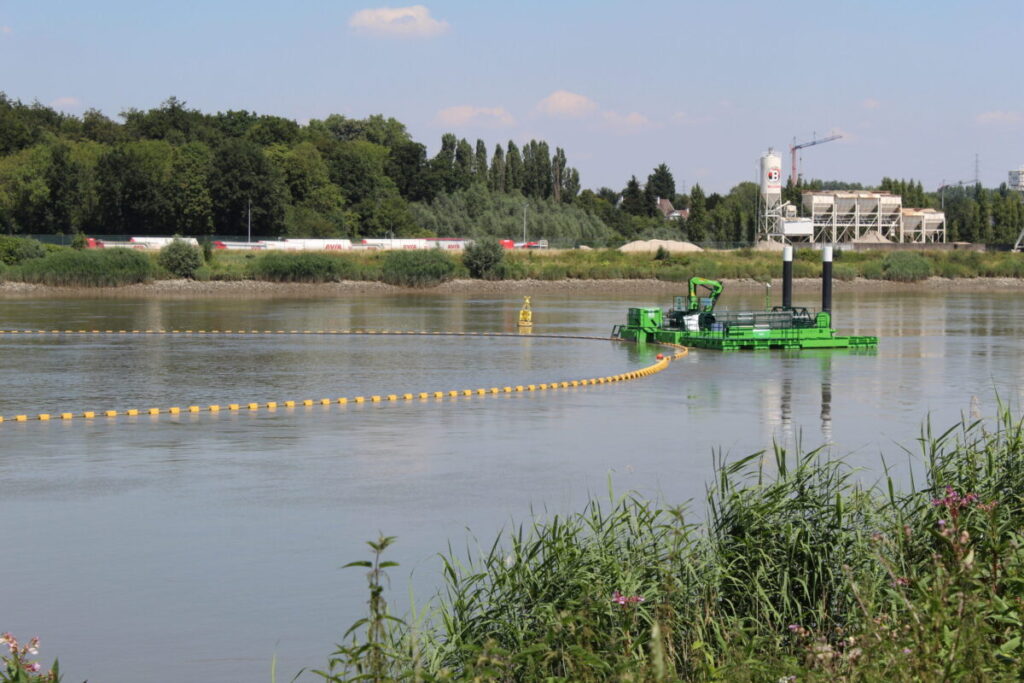Interactive Digital Twin of a cleanroom robot
The essence
Together with our partners Orange, Stäubli and Cilyx, we created a fully interactive virtual representation of Stäubli’s industrial robot, the TX2-60L. This Digital Twin lives in the MS Azure cloud; but can be visualized using a Microsoft HoloLens or desktop app. It is synced in realtime with the actual robot. Its movements, operational state, IoT data, etc… can be assessed in detail, both for the current time as well as historically. And since the synchronization works bidirectional, the Digital Twin even allows controlling the real robot! All this allows for finegrained insights and the possibility to resolve occasional disruptions, without the need for physical presence in the cleanroom.
Update: We have expanded this project to France, implementing the same application for Orange France..
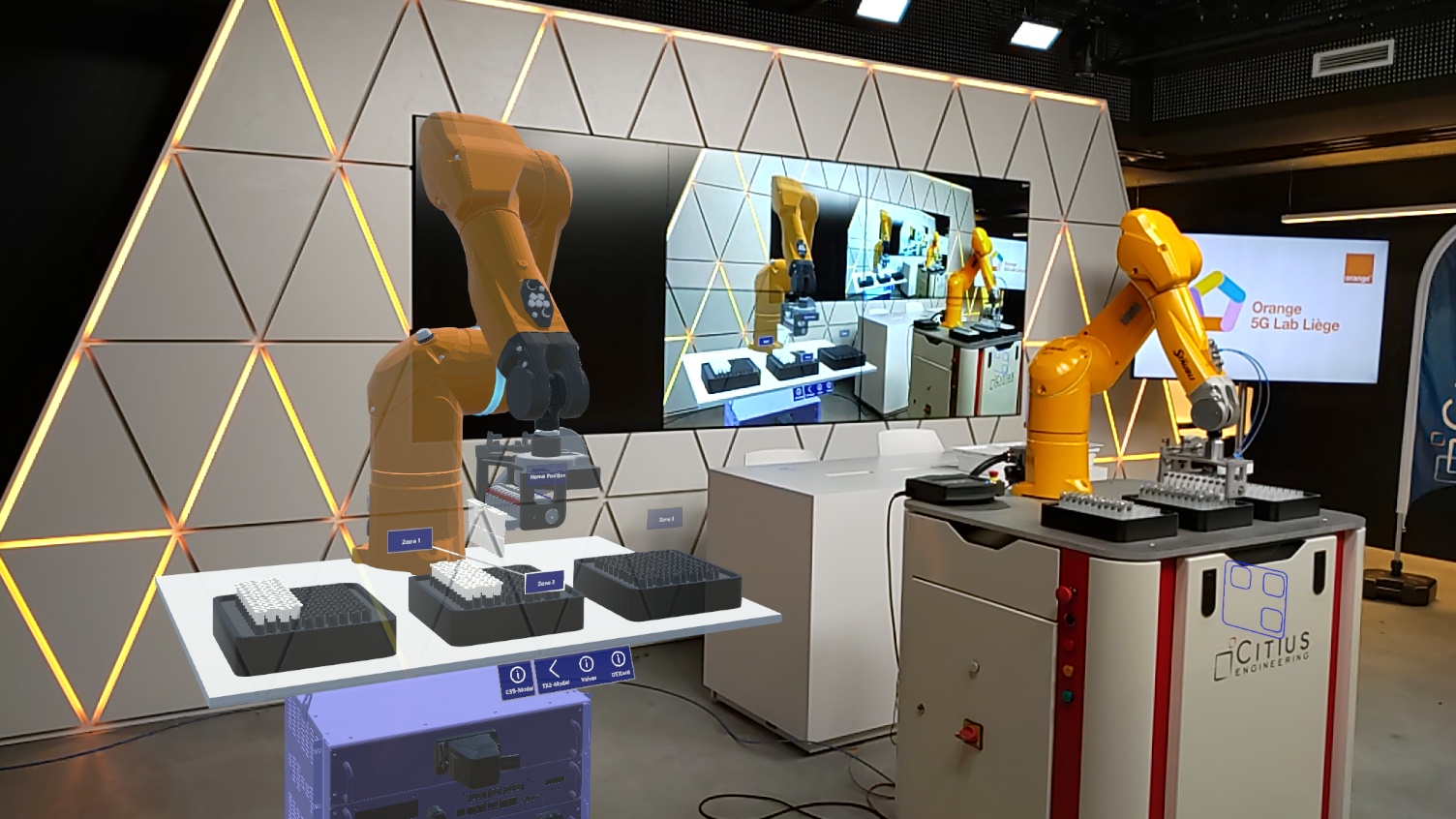
The challenge
Assess and control a robot remotely
Modern-day factories and laboratories are filled with robotics, such as robot arms automating industrial processes. But what if something goes wrong? Maintenance or inspection tasks might be difficult; access can be subject to stringent security requirements, the robot arm could be in a cleanroom, travel time for technicians might be high, and so on.
What if all this could be done remotely, including being able to follow the exact current state of a robot, without having to compromise? This is the journey we set out on together with our partners, Orange and Stäubli.
The Solution
- It allows assessing the current (and historical) status of the robot arm, including temperatures, operating mode, safety status, errors, info or warning messages, and more – so problems can be diagnosed remotely.
- It represents the real-world physical movements of the robot in real time – so remote technicians can follow exactly what the robot is doing.
- It allows controlling the robot to a certain extend – so remote technicians can ensure safety (lower movement velocity, lock movement, reboot the robot controller, etc…) and fix an occasional disrupt.
- It helps facilitating real-time support ‘over the air’ without requiring the robot to be reachable over the public internet. – Many industries, such as pharma or biotech, have tight security requirements in place and prefer not to open their network any further than necessary. Our solution leverages a private ‘express route’ to link the actual robot to its Digital Twin, living in Microsoft Azure. Security first!
Creating the possibility to access all this information remotely can save manufacturing plants tons of time and money. It eliminates the need for physical presence in the cleanroom, which means no unnecessary disinfection of the room and the person entering the room is needed.
Our approach
Sync information with the robot
The first problem that came to mind when designing this solution was: how are we going to sync information from and to the robot? Can it even report all the data we need? Well, yes! The technical setup is so interesting that we decided to dedicate a complete blog post to it. Read all about the hardware setup, the software architecture, our general solution design and technical approach.
